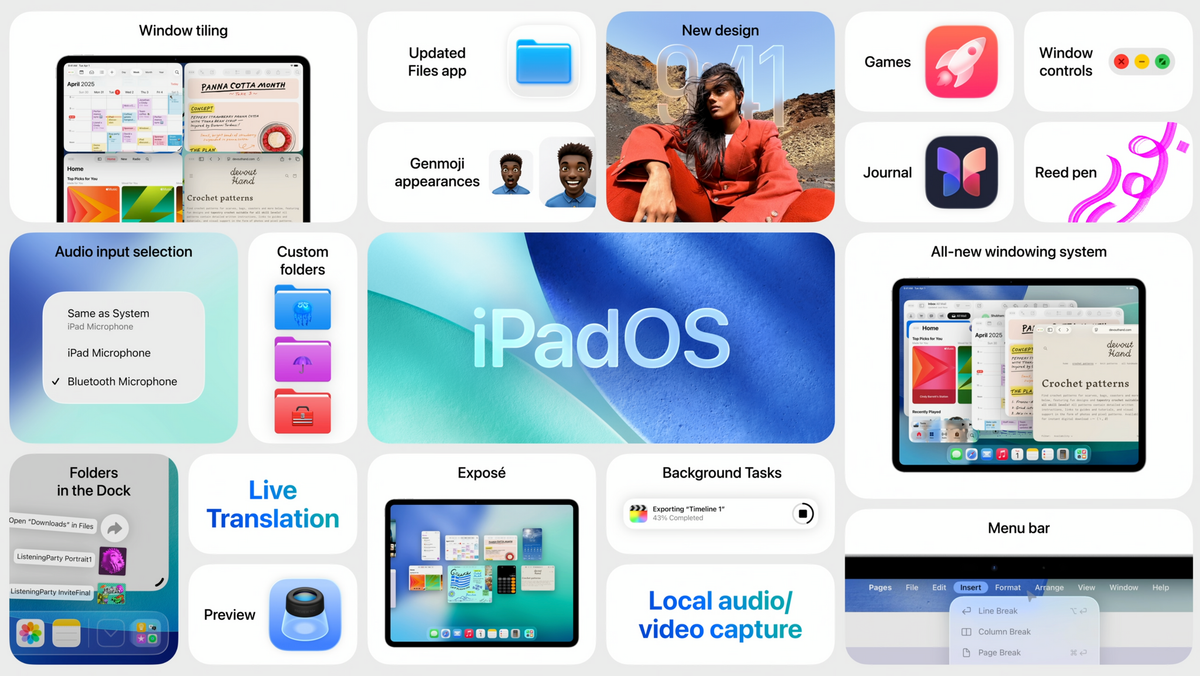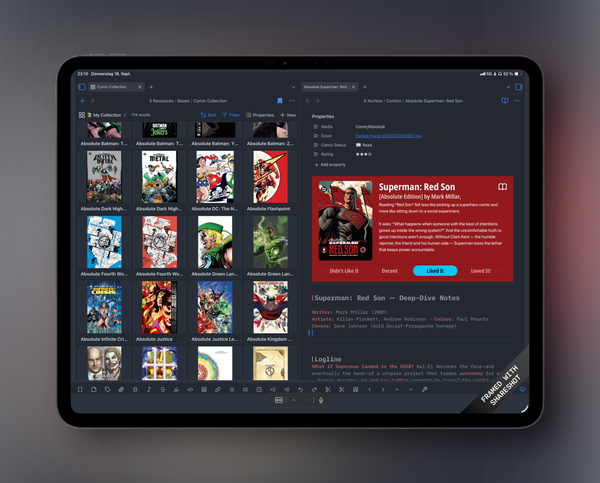iPadOS 26: The Moment the iPad Grew Up

On Monday, June 9, 2025, during WWDC25, Apple unveiled what I believe is the biggest leap for the iPad in years — at least from the perspective of a long-time iPad enthusiast like me. To understand why this release feels so significant, it’s worth revisiting the moment that first hooked me on this so-called “third category device.”
A New Device for a Digitized World
Computers — whether the bulky desktops of my childhood or the clunky laptops of early adulthood — always felt like artifacts from a less intuitive era: slow to boot, clumsy in design, and built around files and folders rather than ideas and workflows. My father loved meticulously organized digital folders, but creativity? That was another story.
The iPad struck me as a counterpoint. It wasn’t just smaller or sleeker. It embodied a different philosophy: always online, touch-first, built around apps rather than files. It was the first device that felt native to a fully digital world — fluid, responsive, and designed for creation, not just consumption.
That mindset still defines my iPad experience today: it’s a tool that accelerates my thinking instead of interrupting it.
My Turning Point: 2018
In 2018, I was finishing university and transitioning from headhunting in the construction industry into software development. My days were spent on trains, juggling hotspot connections, taking notes, replying to emails, and switching contexts constantly.
Then came my third iPad (after the iPad 2 and iPad Mini) — my first self-purchased computer after my military service. It arrived at exactly the right time:
- Instant connectivity: No waiting for Wi-Fi, no noisy fans or slow boot sequences. A single swipe, and I was ready to work, think, or create.
- Form meets function: Without a home button, the screen felt like a blank canvas. The Apple Pencil wasn’t a stylus — it was a thought-extension tool. I could sketch and scribble while the landscape rushed past outside the train window.
- Seamless workflow: Working on the go no longer meant jumping through hoops. Ideas came faster, and I could capture and iterate on them in real time.
That was the tipping point: the iPad stopped being just a consumption device. It became a serious thinking tool — one that mirrored how I work and how I process the world. I bought the 12.9-inch model on launch day in Munich. I haven’t looked back since.
The In-Between Years: Steady Progress, Lingering Friction
Between 2018 and now, each WWDC brought small steps forward. Apple nudged the iPad closer to professional-grade status — but slowly. True multitasking remained limited. Background tasks were often killed off. File management felt like an afterthought.
I kept my MacBook within reach, just in case. It was my safety net for mission-critical work.
And yet, I never stopped using the iPad. In workshops, in meetings, on the move — it was always the device for the in-between moments. But it wasn’t quite the device for everything. Not yet.
WWDC25: iPadOS 26 Bridges the Gap
This year’s keynote left me hopeful but cautious. Would Apple finally unlock the iPad’s full potential?
So I installed the first developer beta of iPadOS 26. And almost immediately - after playing around for the last few days -, I could feel the difference.
This update closes the gap between creative playground and professional workstation. As a long-time Mac user, many workflows now feel familiar — but crucially, iPadOS still has a soul of its own.
- True Multitasking and Persistent Background Processes
Now I can start a render job in Final Cut Pro, switch to Miro, check Confluence, and update Jira — and everything keeps running. Apps stay active. Background tasks finish. The OS no longer gets in the way — it flows with me.
- Liquid Glass Design
Apple’s new “liquid glass” interface isn’t just visually appealing — it changes how we interact with digital environments. Soft animations and smooth transitions reduce cognitive friction. Switching between real and digital spaces feels less like a break — and more like a glide.
It’s subtle, but powerful. I’m curious to see how this design philosophy shows up in future devices — maybe even wearables that live with us full-time.
Still Some Rough Edges — But Clear Intent
Not everything’s perfect yet. I still miss selective screen sharing on external monitors. Audio routing could use more flexibility. And some professional workflows need another polish.
But that’s not the point.
What matters is that the direction is clear — and intentional. With iPadOS 26, Apple is signaling that the iPad isn’t just a media device anymore. It’s a serious productivity machine.
Conclusion: An iPad for All Moments
Steve Jobs once described the iPad as a “third category” between smartphone and laptop. With iPadOS 26, that vision finally feels real.
This is a device that meets me where I think — and helps me go further. It’s powerful, fluid, and thoughtfully designed. It supports both creative flow and professional depth.
For the first time, the iPad isn’t just part of my toolstack — it’s the core of it.
Pencil in hand, windows open — time to get into flow. I’m looking forward to the next betas.




